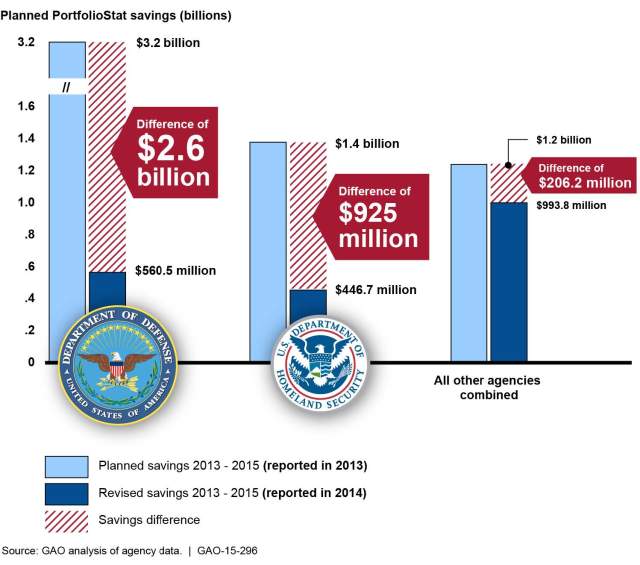Helping Improve Federal IT
As we’ve long reported, the federal government spends about $80 billion every year on IT systems that often fail, greatly exceed cost and schedule estimates, or result in inefficient systems. In an effort to address these problems, Congress enacted the Federal Information Technology Acquisition Reform Act (more commonly known as FITARA), in December 2014. Today, we highlight what we’ve done to help agencies implement FITARA’s main requirements.
Helping agencies meet FITARA requirements
FITARA has multiple key requirements to help improve federal IT:
- Government-wide software purchasing. Federal agencies purchase thousands of software licenses each year. If agencies effectively manage those licenses, they can avoid buying too many. However, we reported in 2014 that only 2 of 24 agencies had the necessary inventory of licenses to allow them to effectively manage their licenses. We recommended to OMB that it issue guidance on this, and made over 130 recommendations to federal agencies to improve their policies and practices.
- Portfolio review. Every year, agencies are required to review their IT investment portfolios to eliminate waste and duplication in an effort known as PortfolioStat. Yet we’ve found substantial differences between planned and actual savings from this review. We’ve made over 60 recommendations to help improve the portfolio review process.

(Excerpted from GAO-15-296)
- Enhance authority of Chief Information Officers. According to CIOs, they don’t currently have adequate authority over their budgets and governance for IT investments. This requirement aims to give agency CIOs more authority, as we’ve recommended.
- Increase transparency and improve risk management. The IT Dashboard is supposed to make federal IT investments more transparent. On the dashboard website, the public can view federal agencies’ ratings of their IT investments’ risks. As we testified, agencies classified 160 of their 738 IT investments as medium to high risk. We have issued several reports examining the accuracy of the ratings and have made dozens of recommendations for improvement.
- Data center consolidation. FITARA urges agencies to consolidate their data centers to reduce duplication. But this is not as easy as it sounds, with federal agencies reporting having nearly 10,000 data centers in 2014. As we recently found, agencies said they closed 1,684 data centers and have plans to close an additional 2,431.
These and other FITARA requirements align closely with our High Risk area on IT acquisitions and operations, making all of this good news for fans of accountability.
Have you been keeping score?
It’s not just us keeping tabs on FITARA. Earlier this month, we supported the House Oversight and Government Reform Committee’s release of a scorecard assigning letter grades to federal agencies on their implementation of FITARA. It looks like we still have our work cut out for us!
 (Excerpted from the House Oversight and Government Reform Committee website)
(Excerpted from the House Oversight and Government Reform Committee website)
- Questions on the content of this post? Contact David Powner at pownerd@gao.gov.
- Comments on GAO’s WatchBlog? Contact blog@gao.gov.





